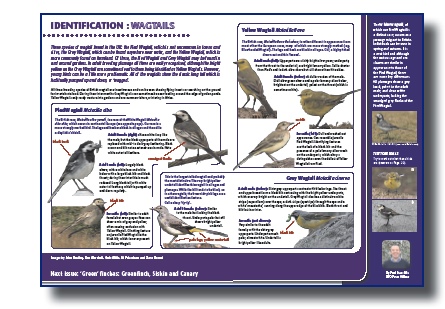
The familiar, black-and-white-plumaged Pied Wagtail is one of three wagtail species to breed in Britain. All three — the other two are Grey Wagtail and Yellow Wagtail — are named after their colouration. However, some of the colours are shared between the different species and this can complicate things when it comes to identification. For example, the adult male Grey Wagtail has a yellow chest and belly.
Because of this, the BTO's Garden Ecology Team has made available a guide to wagtail identification. Tim Harrison, Garden BirdWatch Development Officer at the BTO, commented "We hope that this new guide will help people to identify any wagtails that they see. At this time of the year, only Pied Wagtail and Grey Wagtail are present — Yellow Wagtail being a summer visitor — so it is a good time to get your eye in and learn what to look for."

Yellow Wagtail, Titchfield Haven NNR, Hampshire (Photo: Steve Copsey)
He continued: "The Yellow Wagtail is red-listed as a bird of conservation concern because its population is in substantial decline. This guide will enable interested birdwatchers to distinguish this species from the similar-looking Grey Wagtail more accurately. Because of this, the Yellow Wagtail population will be monitored more closely through 'citizen science' schemes operated by the BTO."
For your free wagtail identification guide pack, please call the BTO on 01842 750050, email gbw@bto.org or send an A5 SAE to GBW Wagtails, BTO, The Nunnery, Thetford, IP24 2PU.


